- News
- Reviews
- Bikes
- Accessories
- Accessories - misc
- Computer mounts
- Bags
- Bar ends
- Bike bags & cases
- Bottle cages
- Bottles
- Cameras
- Car racks
- Child seats
- Computers
- Glasses
- GPS units
- Helmets
- Lights - front
- Lights - rear
- Lights - sets
- Locks
- Mirrors
- Mudguards
- Racks
- Pumps & CO2 inflators
- Puncture kits
- Reflectives
- Smart watches
- Stands and racks
- Trailers
- Clothing
- Components
- Bar tape & grips
- Bottom brackets
- Brake & gear cables
- Brake & STI levers
- Brake pads & spares
- Brakes
- Cassettes & freewheels
- Chains
- Chainsets & chainrings
- Derailleurs - front
- Derailleurs - rear
- Forks
- Gear levers & shifters
- Groupsets
- Handlebars & extensions
- Headsets
- Hubs
- Inner tubes
- Pedals
- Quick releases & skewers
- Saddles
- Seatposts
- Stems
- Wheels
- Tyres
- Health, fitness and nutrition
- Tools and workshop
- Miscellaneous
- Buyers Guides
- Features
- Forum
- Recommends
- Podcast
feature
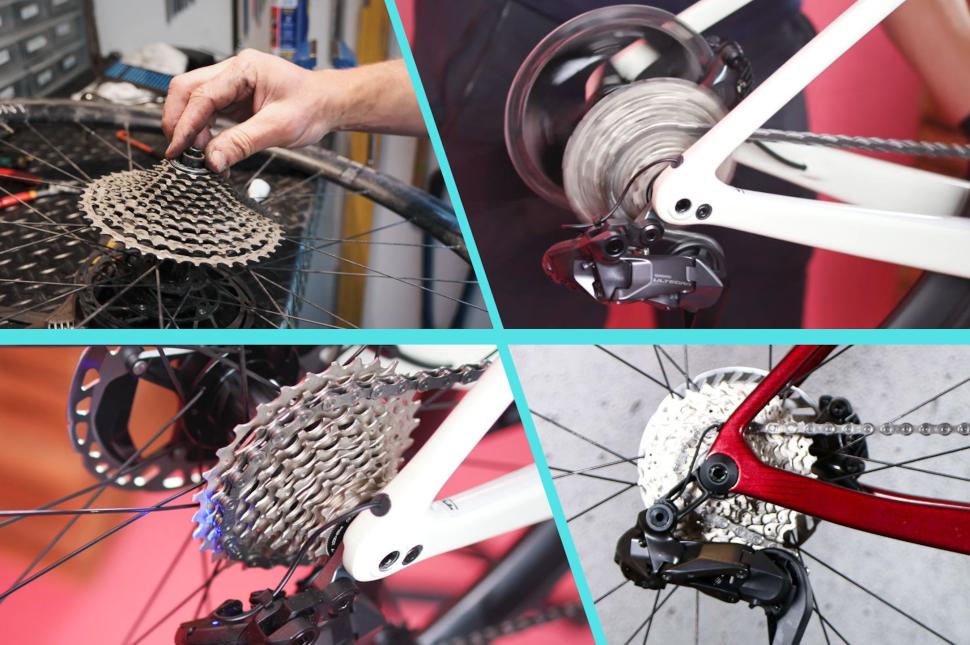 Wider cassettes
Wider cassettesDo wide ratio cassettes for lower gears have any place on performance road bikes? Why the pros are moving away from smaller sprockets
Years ago, the choice of gears available on performance road bikes was pretty much made for you, with a standard 53/39t chainset often the only way to go, and cassette choice limited to whether you wanted a measly 23 or 25 teeth on your back sprocket... or even a 21. Ouch!
Today, road bikes now come with increasingly wide cassettes and seemingly more gearing options than ever, with the leading groupset manufacturers now offering at least 12-speed cassettes to reduce the gap between each shift. So, why has the move to wider cassettes as a default setting happened? Are there still some circumstances where a tighter cluster is the way to go, or is something like an 11-34T truly better in all circumstances? Let's weigh up the pros and cons.
Before we get started, if you're new to all this: a bike cassette is a cluster of sprockets (gears) attached to the rear wheel of a bicycle. It works in conjunction with the chain, chain rings and derailleurs to provide different gear ratios, allowing you to adjust your cadence and therefore effort, to the terrain.
Gravel bike gears for the win?
The trend for cassettes to offer more gearing range is by no means new, and the largest sprockets have been growing in size over the last few decades. Whereas performance bikes of old typically came with 11-23T cassettes, it's now common to find 11-34T cassettes on Shimano-equipped road bikes, and 10-33T or even 10-36T cassettes on SRAM-equipped performance bikes.
This shift reflects a broader move towards providing road bikes with a greater range of gears. Take the Trek Madone SL 6 Gen 8, for example. This lighweight aero offering features an 11-34T cassette with a 23-tooth range that wouldn't have looked out of place on a gravel bike a decade ago.
Similarly, the Specialized Tarmac SL8 Expert comes equipped with SRAM's 10-36T cassette, providing an even wider 26-tooth range.
Why wouldn't you fit a wider range cassette?
You might be asking, then, why wouldn't you fit a wider-ranging cassette? A wider cassette offers a greater range of gears and therefore can make the hills easier, but there are a couple of drawbacks.
The first drawback is that wider-range cassettes are typically heavier. For example, a Shimano Ultegra 12-speed road cassette weighs 291g for an 11-30T setup, while the 11-34T version comes in at a claimed 345g.
Likewise, SRAM's Red 12-speed cassette weighs 175g for 10-26T and 210g for a 10-33T cassette. Although this weight may seem negligible to the majority of us, bike manufacturers and pros alike are still keen to shave off every possible gram.
> 10 reasons why your bike's gears aren't working as they should, and how to fix it
The next drawback is that a wider range cassette will typically has larger gaps between sprockets, which results in bigger jumps in cadence as you change gear.
For example, the Shimano Ultegra 12-speed 11-30T cassette features sprockets sized 11, 12, 13, 14, 15, 16, 17, 19, 21, 24, 27, and 30T, while the 11-34T cassette has sprockets sized 11, 12, 13, 14, 15, 17, 19, 21, 24, 27, 30, and 34T.
For SRAM Red 12-speed cassettes, the 10-26T version has sprockets sized 10, 11, 12, 13, 14, 15, 16, 17, 19, 21, 23, and 26T, while the 10-33T version includes sprockets sized 10, 11, 12, 13, 14, 15, 17, 19, 21, 24, 28, and 33T.
> Cycling cadence: how fast should you pedal?
Elite cyclists, or just very particular amateurs, might find that the precise gear they want to keep to their perfect cadence isn't available to them with a wider cassette, or want the jumps between gears to be as small as possible to avoid losing any momentum. Examples where very close gearing is favoured include time trialling, where having the perfect gears for the course could be crucial to putting in your best possible time against the clock.
Why is this happening?
Today’s pro road racers are provided with equipment significantly more advanced than what was available 20 years ago, but it’s the range of gears that has been the most interesting trend as the groupsets have evolved. As the number of sprockets has increased, the gear range has increased.
It's now possible to offer riders a broader range of gears without compromising the quality of shifting or the reliability of the drivetrain. While wider-range cassettes from Shimano and SRAM introduced slightly larger jumps between some gears, they still offer smooth and reasonable progressions thanks to having an increased number of gears. For example, take Shimano’s 11-34T cassette from it’s latest Dura-Ace and Ultegra groupsets. It has a 23-tooth range between the biggest and smallest sprockets, which on average works out as less than a two tooth jump for each gear change. Compare this to the 5 or 6-speed groupsets of 50 years ago, and a cassette with the same range would result in an average jump of over four teeth per gear change, making it no surprise that these cassettes don’t really exist any more.
Some people might question whether 11-34T cassettes that Joe Public use truly belong on high-end road bikes, but when it comes to cycling equipment, the pros often set the standard.
Although pro riders are travelling much faster than the average chopper, they still require a setup with the ability to handle a range of terrains, from steep climbs to fast descents, without compromising on performance.
The most common chainset size in the pro peloton for typical stages of a Grand Tour, such as the Dauphiné, is 54/40T for Shimano and 52/39T for SRAM chainsets. Shimano neutral service bikes are fitted with 52/36T chainsets. At the rear, we've seen the widespread adoption of 11-34T cassettes amongst Shimano-sponsored athletes, and the use of 10-33T cassettes from SRAM-sponsored riders.
> Should you run a 1x set-up on your road bike?
Given that professional cyclists are amongst the most discerning users of bike equipment, the fact that the 11-34T cassette meets their rigorous demands suggests that the disadvantages we’ve discussed may not be so significant after all.
Despite many pros using this cassette size, their bikes still weigh around 6.8kg, which meets the UCI's minimum weight limit. This also indicates that the gear ratios are well-suited for these athletes, who prioritise both efficiency and performance.
As we mentioned earlier, the disadvantages of having larger gaps between gears on wider range cassettes has largely been mitigated by the increased number of gears on modern 12-speed groupsets. Although we recommend not copying everything that the pros do, going to wider-ranging cassettes is almost always one of the things that we would recommend doing.
Recently, we compared the Pinarello Dogma X with a Colnago CT1 Titanio Lux from 2000 on a rolling ride. One of the most significant advancements we've noticed in the past 20 years was the improved range of gears. Today's road bike gearing is far better suited to the needs of the average rider.
What about 1x?
As well as the shift to wider cassettes, an increasing number of bikes now use 1x drivetrains, which essentially means the bike has a single chainring with no front derailleur. These setups typically have even wider range cassettes, although the gearing range may not be as extensive as 2x setups. Notably, Jonas Vingegaard and his Visma Lease a Bike teammate Wout van Aert have used SRAM 1x setups for certain stages of the Grand Tours.
> Are single chainring set-ups the future of road cycling?
We've also recently reviewed Van Rysel's NCR road bike, the first mainstream pure road bike that we've tested that ships with 1x setup. We can see this trend becoming more popular in the future, especially on beginner road bikes where simplicity is a priority.
So, should you choose an 11-34T cassette?
Is an 11-34T cassette better than an 11-25T? For almost all riders, the answer is certainly yes, but it won't be required by absolutely everyone. If you live in a flatter area, you might not need the extra low gears that an 11-34T cassette offers. However, for those riding on varied terrain, the added range can be a game changer, and as the pros prove, without significant downsides.
We're now seeing much wider range groupsets with more realistically usable gear ratios for those of us that don't race. Having the gears to help out on challenging terrain and conquer more hills sounds like a good deal to us. Realistically, on my local group rides, it's more about ego than performance that stops people from switching to a larger cassette.
Can a bike shop swap your cassette out?
> Check out the gearing choices of the pros at the Tour de France
If the bike you’re considering comes with an 11-34T cassette that you don’t want or need, many bike shops will swap it out at the point of sale. This typically depends on whether they have your preferred cassette in stock and if it’s compatible with the other components.
It's generally much easier to go down cassette sizes than up, as you will most likely require a new longer chain to facilitate the larger sprockets if you decide you need a bigger one.
What's coming next?
There is a practical limit to how much bigger cassettes can get. Beyond a certain point, the added weight will become disadvantageous, and without further increasing the number of gears, larger jumps will make it harder to maintain a comfortable cadence. If you've ever ridden your mountain bike on the road, then you'll be well versed in this.
Personally, I think an 11-34T cassette is about the sweetspot for 2x setups, and I think we'll see more and more performance bikes follow suit. It is probably unlikely we'll see much larger cassettes in this configuration without compromising performance.
What size cassette do you ride? Let us know in the comments section below.
Emily is our track and road racing specialist, having represented Great Britain at the World and European Track Championships. With a National Title up her sleeve, Emily has just completed her Master’s in Sports Psychology at Loughborough University where she raced for Elite Development Team, Loughborough Lightning.
Emily is our go-to for all things training and when not riding or racing bikes, you can find her online shopping or booking flights…the rest of the office is now considering painting their nails to see if that’s the secret to going fast…
Latest Comments
- stonojnr 1 hour 37 min ago
A 1 lane closure on a dual carriageway bridge gridlocks town, journeys which took "20mins" now take 1hr+...
- gary p 1 hour 43 min ago
"It's 1% easier than a Sram 46/33, 10-36 combo but 11% slower than what is already a full compact at the other end."...
- andystow 1 hour 44 min ago
Oh, and at the top of one of the climbs, whilst taking photos, some tourists (bloody Americans!) forgot to set their parking brake, and suddenly we...
- David9694 1 hour 59 min ago
Man charged as parked car crashes into house in Hamble Lane...
- Simon E 2 hours 13 min ago
700 x 28 / 30 / 32 according to the link at the top of the article....
- Dogless 2 hours 35 min ago
Why do people need a helmet for parkride? If cycling with little kids they'll be going slower than people on parkrun, but presumably they're not...
- stonojnr 3 hours 26 min ago
I doubt it's that difficult to work out, without the race the sponsors don't get the exposure for buddying up and helping with costs for the...
- anke2 3 hours 39 min ago
Oh no! Did we not just learn that a large fraction of the population believe they could compete in olympic cycling if only they had four years time...
- Sriracha 3 hours 40 min ago
You could promise the moon, with no timeline.
- ktache 4 hours 19 min ago
For Xmas last the better half got me a rapha brevity infinium "jersey". ...

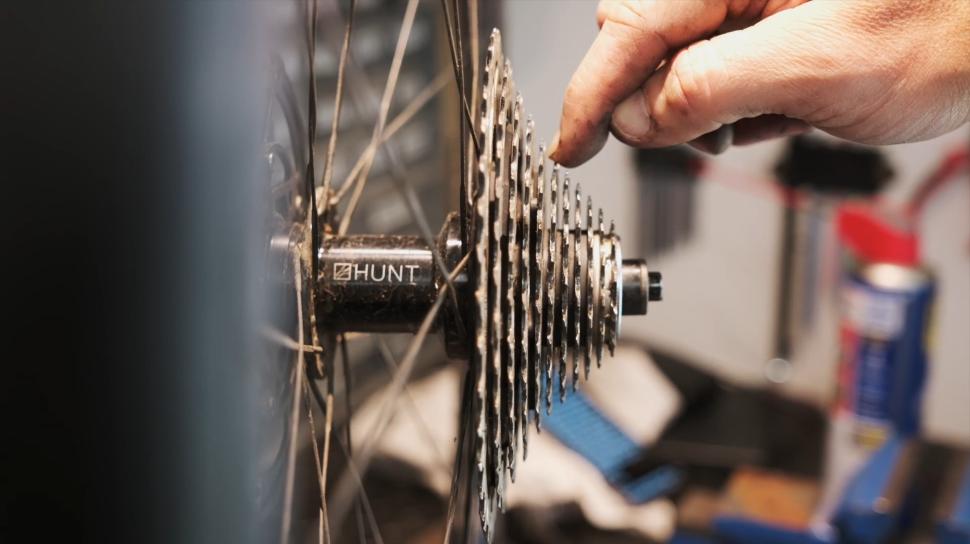
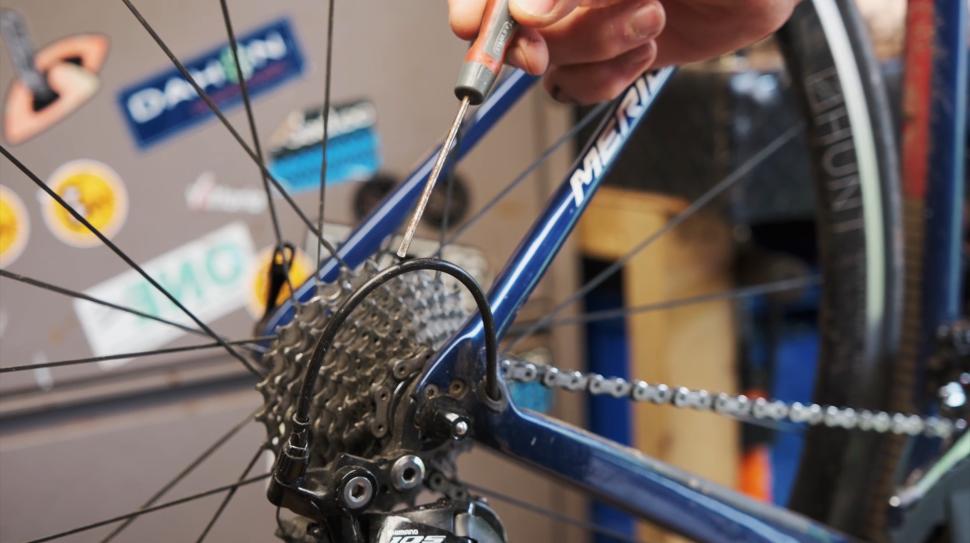
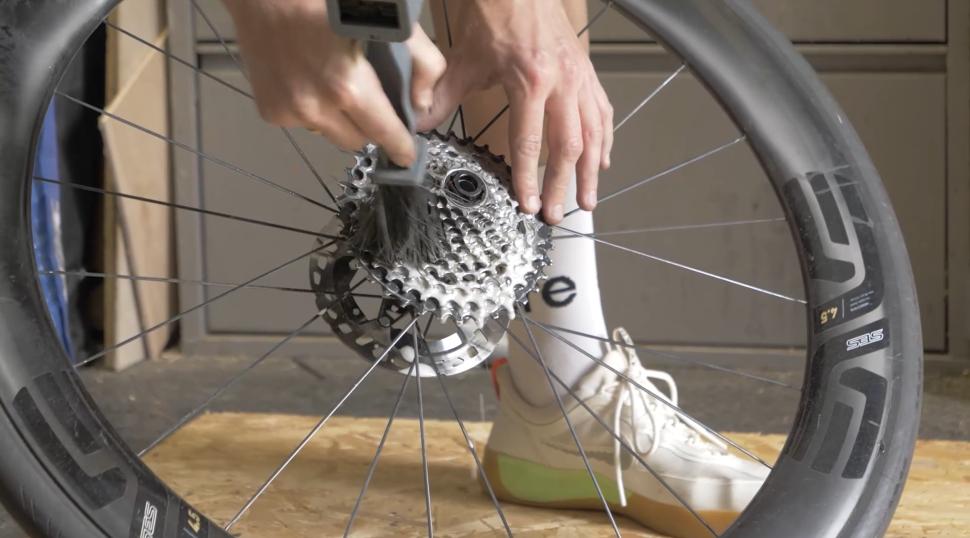

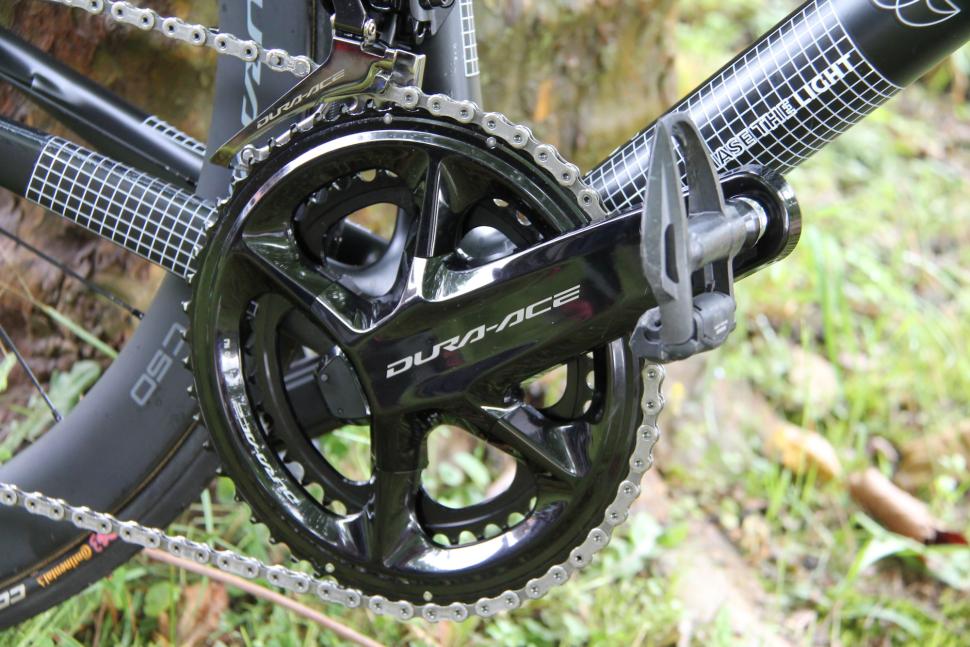

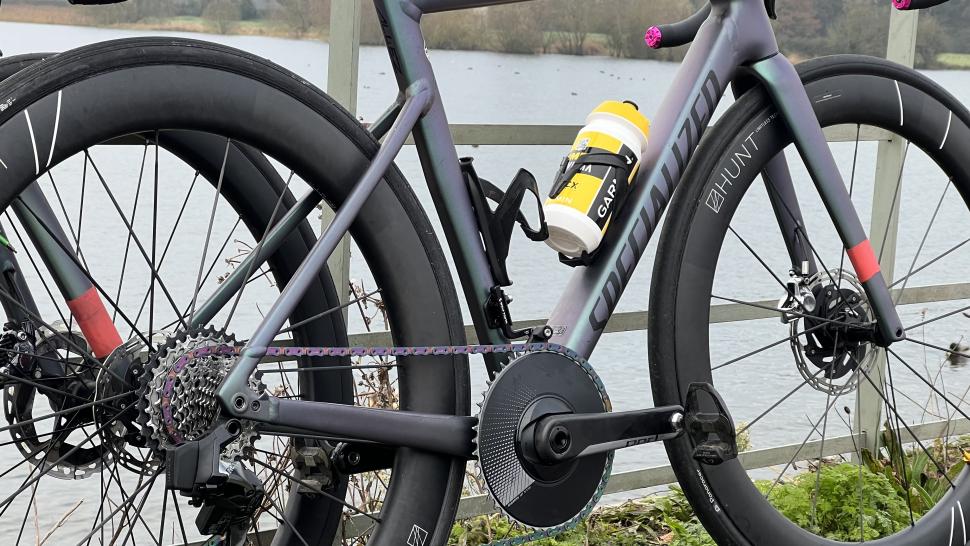
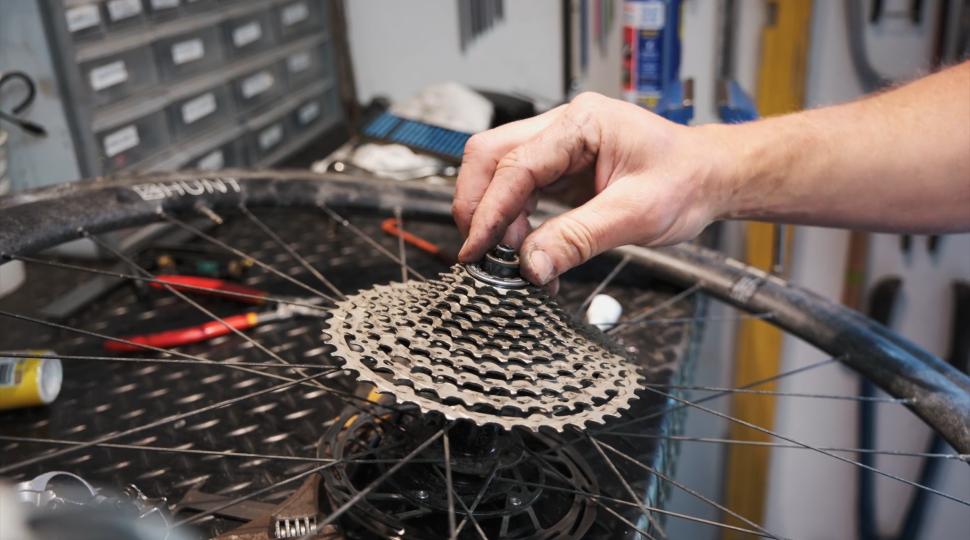

Add new comment
49 comments
10:40 am on bank holiday Monday and I've spent an hour reading and commenting! But little new since 1970s when we had far less choice of gears but conversations were even more vicious.
Alan Bates (EG Bates, Barking Rd, Newham) went out of his way to compliment my sensible request for Ultra6 13 to 28 instead of more macho range.
Time to get on with jobs in house!
Increasingly i am also lowering peoples final drive by putting on compact cranksets or even GRX subcompacts, as you can chase big cassettes all day but removing unnecessarily big gears from the top end achieves a similar effect.
it's not what you have in back, but what you roll with up front that makes the difference for me. toss that 39 for a 53/42 unbeatable combo and fly all day
Just been pondering this comment for five minutes, trying to make it make sense. Not managed it yet. Apart from being at a loss to know why you would choose a bigger inner ring than you have to have, I'm almost certain that "what you have in back" makes quite a lot of difference. Can anyone enlighten me?
strokes for folks is the gist of the message. That combo works for Laz might not be the correct choice for someone else.
I didn't really get that message but notwithstanding I remain perplexed by the statement that what you have on the rear doesn't matter when clearly that has just as much influence on the gears available to one as what's on the front, and also why, even if one wants the big gears a 53 front offers, one would feel it necessary to jettison the 39 inner ring for a 42.
The pros aren't grovelling their way up hills at 8kmh with wide cassettes, they're just staying in the big ring longer
who needs a 11? Or maybe even 12? 13x52 and spin to win at 32mph and just tick if your going downhill any faster than that. 10 speed 12-30 was probably the most sensible standard cassette before you start buying individual sprockets from miche and building your own cassette
Back in 1970s & 80s, 52/42 Biopace * 14/24 5-speed was rarely good: span out in top gear, painful zig zag up 20+% gradients. Ultra6 13 to 28 was a lot better but still not wide enough. 52*13 often spun out. Age 69, back on road bike after break for lockdown and heart attack, 50*11 Ultegra on 2018 Roubaix spins out occasionally on level tarmac (modern tyres and wheels have low rolling resistance). 34*34 not yet used.
Unless racing on flat, we used to go by closest to 10% jumps on freewheel and approx 20% at chainrings.
I'd like at least one bigger gear that I would use occasionally so I can keep a straighter chain line and parallel the low end occasional use (maybe 54*11). That would require new front rings, which I can't afford yet and I'd like shorter cranks.
Modern multi-gear options are great compared with old 10 or 12 speed. Up steep hills, I can select for smooth or heavy road surfaces - bliss. Looking for some 25% rough tar to test the 34T at back
Campag are the only people who have sensible 11-34 ratios. IE it has the 16. 5 inch gaps between 60 and 100 inches should be the norm, especially for heavier riders. Shimano leave it to small, small to get the big 16. Stupid. Wake up Shimano, this is what is needed. 11 / 12 / 13 / 14 / 15 / 16 / 17 / 19 / 22 / 25 / 29 / 34T
I am using Spec Diverge 2019 with Shimano CS HG700 11-34 (11-13-15-17-19-21-23-25-27-30-34) with Praxis Works 48/32 (chainline 45 mm about). It is better for me because most of the time on road I am using 48 with 15-17-19 without chain crossing. With Campa crossing would be not acceptable.
It's pretty flat around here. 11-23. One-tooth steps all the way down to the 19. Perfect.
12-speed! I'm stuck with 11-speed Ultegra 2018. Almost perfect except I'd like a bigger chain ring, maybe 54 instead of current compact 50 with 165mm cranks. Can't afford to change
I am 67 and ride a Titanium frame set with carbon forks a compact chainsaw with an 11/34 cassette I just ride for pleasure. But I see and hear plenty of Wannabes some of whom I KNOW have never raced talking about the best gearing set ups. Why because "bench racing" is fun a harmless diversion that hurts no one and keeps bike shops turning over and it's better for your health spending money on parts than alcohol and bad food enjoy the road ladies and gentlemen.
I don't think I'd get that much pleasure riding a compact chainsaw, I'd be worried about chopping a leg off.
Age 69, back on road bike after break since 2020 lockdown and massive heart attack and stiff neck now loose so can look backwards.
If I could afford, I'd fine tune my gears. 50/34 * 11/34 11-speed 2018 Ultegra is so close to perfect it makes me want to tweak it: 5% or 10% bigger top gear to use occasionally instead of spinning out with what I've got. That would be a mod I can't afford as it means a new chainset. Never raced but hate riding slow.
Ride position makes a big difference. Upright - low gears. Changed my Roubaix bars and stem - much lower, more aero, and get far more power through the pedals, hence wanting a higher gear
It's quite simple..
I adjust the bike to the terrain i'm going to ride.
Where i live (Netherlands polder) flat and windy.. 50/34 front chainrings never use the inner.
Rear cassette 12-speed is 11-30.
I swop to a 11-34 when i go on holidays to the alps..
My commuter/gravel bike 11-28 (11-speed) swop the rear to 12-34 for gravel rides.. simple
IMO Most amateurs would be better served with a triple chainset.
My gravel / commuter bike has 11-34 / 46-30 and it's still a struggle when loaded up hills!
The road bike I've been riding lately is an old steelie from before my time, with 13-26 / 52-38 gearing. Proper hard work. It had a 42 small ring but that felt like a joke!
It's still the only way to get 700%+ range with sensible (15%) gaps.
Age 69 and amateur, nonsense... for me. But most occasional riders get a heavy bike with pressed steel triple then come to me to adjust cables and alignment due to chain coming off the rings. Serious touring cyclists and bike campers could use a quality triple like in 1960s to 1980s but freewheels were just 6-speed 13 to 28 at widest range with huge jumps between
It's all about what cycling you do. As a Netherlands resident, I'm running 11 speed 12-25. This optimises the range that I will actually make best use of. I'm not spinning out on the non-existent downhills just like I'm not grinding up massive inclines. I've got a wider range cassette I put on when I go somewhere more hilly because that is what's necessary.
I am an old-school rider (literally cause I am 62) and I was used to ride small sprockets—till three years ago max 25 teeth. One year ago I purchased a new road bike with 11/34 teeth. after a couple of months, I changed the sprocket to 11/28. One will ask why. As mentioned in an article thirty years ago we were condemned to 6 or even 5 sprockets with the largest no more than 23 teeth. And that's why we are used to push hard with fewer revolutions. And old habits die hard. I can not spin on 34 teeth without my heart rate going into the sky.
At 65 I'm even older school than you, I remember when the lowest gear we used was 42x21 and we thought that it was quicker to walk rather than use an even lower gear but my current best bike has 33x33 and I can get up hills faster because of it (faster than otherwise now not 40+ years ago). if you have a 34 you don't need to use it but it is there if the hill gets steeper!
Age 69. Still not used my 34*34 bottom gear but did use 34*30 briefly on very lumpy 20% after 60km of up-down ride.
I think bike set up makes a difference. More upright - lower gearing; low and stretched out - push a higher gear easy
You young things! Spot on about heart rate and spinning. Age 69, after massive heart attack in 2020, I force myself to trundle as warm up for at least 20 minutes (advised my cardio rehab and born out by experience). Then I find myself blasting along as quick as ever and much faster than most. The Polar HR10 on smart phone shows it takes that long to reach an stable HR
Would really love a shimano 12 cassette with 12,13,14,15,16,17,18,19 in it. They originally planed a 11-28 but nowhere to be found. That would do.
If i dont go abroad i dont need anything beyond 28 but do miss the close ratio's in current cassettes. And like most people unfortunately an 11 is rarely missed. Could live without.
an 11 is rarely missed. Could live without.
Had to switch to Edubied cassette for that. Good and light but shifting not as crisp as original.
What I miss is that with the old 6 speed blocks you could buy the body and fit the sprockets you wanted to get a custom block, your local bike shop stocked everything from 13 to 28 and wolud make anything you wanted, one local wag decided he wanted a real close ratio block and had something like 15, 15, 15, 16, 16, 16 fitted for a laugh!
It is a shame you can't do the same with modern cassettes.
Sounds good. And with 1980s shifting there's a good chance you could find yourself sliding around somewhere between the 15 and the 15.
It has been possible to tailor your gearing for a long time. Suntour had a 38-tooth sprocket in the '70s and chainsets with rings from 24 to 56 have been available since at least the '50s. In many ways it is now more difficult to design the gearing you want for your riding, but I think what has changed is acceptance of 'easy' gears.
To answer the question - Yes!! Why not - who cares what the pros do or don't use. Anything that makes climbing easier has got to be good, hasn't it?
Pages